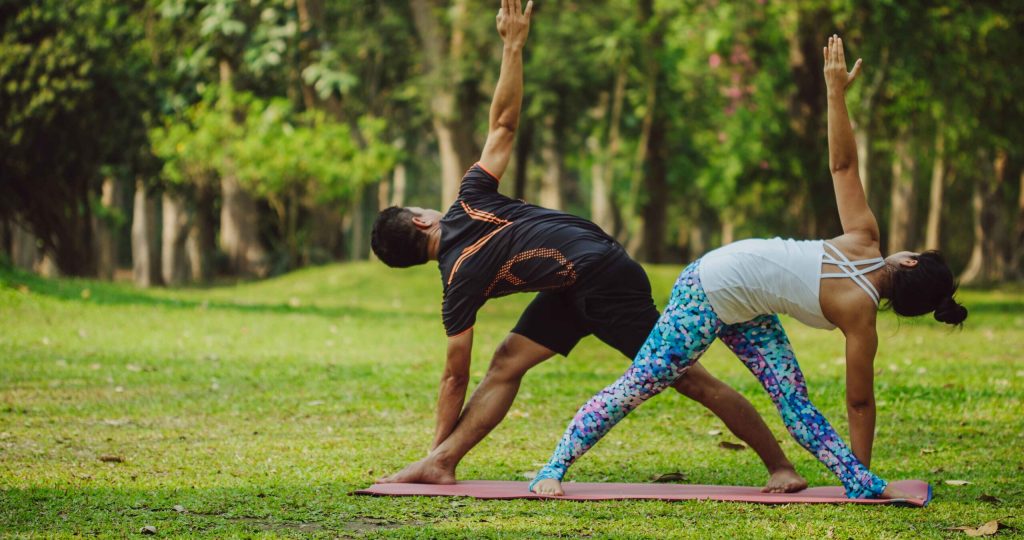Medically Written and Reviewed By Ayurvedacharya Dr. Gaurav Pathare (BAMS)

In Ayurveda, the ultimate aim is to maintain the health of a healthy individual and to cure the disease of the sick. To achieve this, our ancient texts emphasize the importance of Dinacharya (daily regimen) and Ritucharya (seasonal regimen). Among these daily practices, Vyayam (exercise) holds a significant place. While modern fitness often emphasizes intensity and physique, Ayurveda focuses on personalized, moderate, and mindful movement that harmonizes with nature and individual constitution (Prakriti).
In this article, we explore the principles of Vyayama in Ayurveda, its numerous benefits, and how to integrate it into a balanced daily routine
Importance in Modern Life
Vyayama refers to controlled and purposeful physical activity that enhances physical stamina, mental clarity, and overall well-being. According to classical Ayurvedic texts such as the Charaka Samhita and Ashtanga Hridaya, Vyayama is considered an essential part of Dinacharya (daily routine) and a pillar of health maintenance.
In today’s fast-paced lifestyle and predominantly sedentary routines, regular exercise becomes crucial for maintaining overall health. Lack of physical activity has led to a surge in lifestyle disorders (LSDs) such as
Obesity
Diabetes type 2
Heart disease
PCOD (Polycystic Ovarian Disease), especially in women
Key Principles of Vyayama in Ayurveda
Moderation is the Key
Ayurveda advises that one should exercise only until half of their physical strength is expanded. Sign that you should stop include shortness of breath, excessive sweating, or fatigue. Overexertion can aggravate Vata and Pitta doshas, leading to imbalance.
Customize to Your Prakriti (Constitution)
Vata types (light, dry, and mobile): Gentle exercises like yoga, walking, or tai chi are ideal.
Pitta types (hot, intense, and focused): Cooling and non-competitive activities like swimming or hiking are recommended.
Kapha types (heavy, slow, and steady): More vigorous exercise like running or aerobics can be beneficial.
Time of Day
The best time for Vyayama is during the early morning hours (6 AM to 10 AM), when Kapha dosha is dominant. Physical activity at this time helps stimulate metabolism and energizes the body for the day.
Seasonal Considerations
Exercise intensity should vary with the seasons:
Winter (Hemanta/Shishira): Strength is at its peak, moderate to vigorous exercise is suitable.
Summer (Grishma): Strength is lowest opts for light exercises to avoid heat exhaustion.
Monsoon (Varsha): Prone to joint stiffness, mild stretches or indoor yoga is best.
Benefits of Vyayam as Described by Acharya Vagbhata
Acharya Vagbhata, one of the classical scholars of Ayurveda, beautifully elaborated the benefits of regular exercise
Enhances Digestion (Agni Deepana): Exercise kindles Agni (digestive fire), aiding in better metabolism and nutrient absorption.
Promotes Lightness (Laghavam): Regular movement removes heaviness from the body and mind, creating a sense of ease and vitality
Improves Circulation and Immunity (Bala Vriddhi): Exercise improves circulation and enhances Ojas (vital essence), the foundation of immunity.
Reduces Fat and Toxins (Medo Hara): Moderate exercise burns excess meda dhatu (fat tissue) and helps eliminate ama (toxins)
Sharpens the Mind (Medha and Smriti Vriddhi): Physical movement clears mental fog, improving concentration and memory
Enhances Mood and Sleep: Balanced Vyayama helps manage stress and anxiety, leading to better emotional stability and restful sleep
Who Should Avoid Exercise?
Vyayam is contraindicated in the following conditions
Individuals with Vata- or Pitta-dominant disorders
People suffering from Ajirna (Indigestion)
Elderly persons above the age of 80
Children below 12 years of age
After heavy meals
During fever or illness
According to Ayurveda, there is the certain age limit for exercise but according to modern science No matter your age, it’s never too late to exercise or start exercising. Talk to your doctor to get started.
Guidelines for Practicing Exercise
Exercise should be performed by those who have good strength and have consumed unctuous (Snigdha) food.
In Vasanta Ritu (spring) and Shita Ritu (winter), it is advised to do only half of one’s full capacity due to the varying energy dynamics of the seasons.
After exercise, Abhyanga (body massage) should be performed to relax and soothe the body.
Over-Exercise Side Effects
Despite its benefits, excessive Vyayama can cause certain side effects, these side effects include
Trishna—excessive thirst
Kshaya—Tissue depletion
Shwāsa – Breathlessness
Raktapitta—Bleeding disorders
Shrama—Fatigue
Kāsa – Cough
Jvara—Fever
Chardi – Vomiting
Glāni – Dizziness or faintness
Conclusion
Incorporating Vyayama into daily life, tailored to individual constitution, season, and current health status, is a holistic approach to maintaining health and preventing disease. Ayurveda’s emphasis on moderation, mindfulness, and personalization ensures that physical exercise contributes to overall balance and well-being.
Reference
Vagbhat Sutra sthan Chapter 2 / 9-12
The Vital Role of Physical activity in preventing Lifestyle diseases – Caritas
Hospital & Institute of health science
Anupama Krishnan, Blessymol EV. Vyayama. In: Deole Y.S., eds. Charak Samhita New Edition. 1st ed. Jamnagar, Ind: CSRTSDC; 2020. https://www.carakasamhitaonline.com/index.php?title=Vyayama&oldid=44682.

